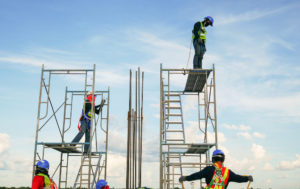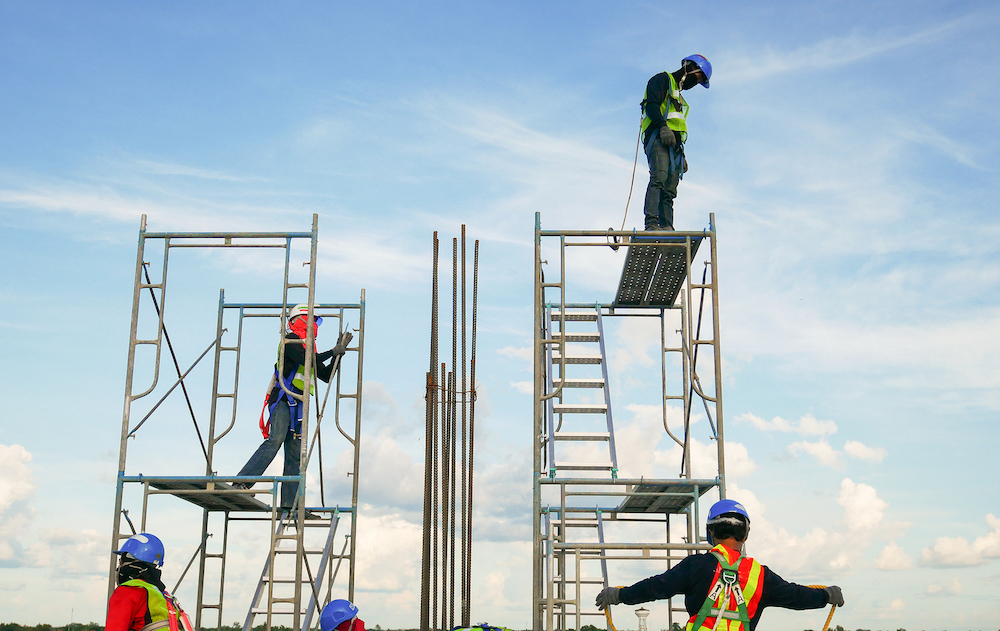
No matter the amount of planning and scheduling, things go wrong. Figuring out the best way to get a project schedule back on track can be difficult. Two of the most common ways are fast-tracking and crashing.
How to get a construction schedule back on track
Whenever something happens that might affect the overall project duration, contractors should consider compressing the schedule. Schedule compression is a method used by project managers to shorten the overall duration of the project without changing its scope. The need to compress the construction schedule can be a result of either the schedule falling behind due to delays or if the project needs to be completed sooner than anticipated.
Delays to the schedule can be caused by unrealistic scheduling, resources shortages, or unforeseen circumstances such as force majeure events. On the other hand, the schedule may need to be completed earlier – either because the client requested an earlier delivery date, or because the contractor or sub wants to be available for another contract opportunity. Regardless of why the schedule is behind, when it needs to be sped up there are two main schedule compression techniques: fast-tracking and crashing.
For a deep dive on the critical path method:
What is fast-tracking?
The first tactic should almost always be fast-tracking. It’s a schedule compression technique when activities that would have been performed sequentially based on the original schedule are performed at the same time (in parallel or in partial parallel with one another). Because fast-tracking doesn’t involve additional resources, it’s usually best to start with this technique.
This process isn’t simply scheduling all the subs or trades at the same time. Careful consideration needs to be taken when changing the activity relationships. Although there aren’t really additional costs with this technique, there are still risks involved. Resequencing and rescheduling subs can be time-consuming and potentially costly. Further, scheduling parallel tasks can lead to excessive trade stacking, and open the contractor up to possible disruption claims.
What is project crashing?
The project crashing technique is when cost and schedule tradeoffs are analyzed to determine the greatest amount of “compression” for the least amount of costs. This technique accepts the fact that sometimes only money can fix the problem. The goal of crashing is to recover the most amount of time for the least additional costs.
This can be done in a number of different ways. The schedule can be crashed by approving overtime, bringing in more resources, or offering early completion incentives. This is the more expensive option, but sometimes it is necessary to get the schedule back on track. Also, like fast-tracking, project crashing isn’t as simple as it seems. Simply throwing money at problems won’t make them go away. Crashing requires careful planning to prevent “panic mode” among the project crews and to avoid acceleration claims.
Fast-tracking vs crashing
Each technique has its own benefits. Deciding which technique to use to get your construction schedule back on track depends on the circumstances. However, one common thread is that both involve making adjustments to critical path activities.
Sometimes the choice between the two is clear. If the schedule has been affected by severe weather delays, fast-tracking should be the best option. On the other hand, if the client requests an early delivery and is willing to pay, then crashing may be the best method.
For instances that aren’t as clear-cut, it’s always wise to start with fast-tracking. This is because fast-tracking doesn’t involve any extra resources, and it usually involves less risk. If the adjustment still doesn’t get the project back on track, then its time to decide if crashing is necessary. To do this, a contractor should weigh the risk of late delivery against the cost of crashing the schedule. Sometimes, the harm to a construction company’s reputation can be enough to outweigh the crash-costs. Either way – crashing can be a risky proposition.
Additional Resources:
- Construction Delay Claims: Delay Types, Claims & Defenses
- Time Impact Analysis | Identifying the Impact of Extra Work
- Construction Accounting: What is a Work in Progress Schedule?

